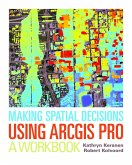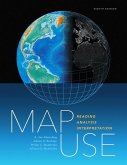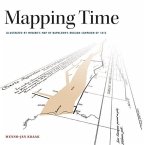Create useful and usable map apps that your users will love.
Turn your next map app project into a success with Designing Map Interfaces: Patterns for Building Effective Map Apps. Whether you're configuring an out-of-the-box solution, building an app using one of the readily available app builder tools, or working on a custom app project, this book will guide you toward developing more useful and usable apps. Current courses for application development focus on technology and architecture rather than the tenets of interface design. This book teaches GIS professionals, developers, and designers the principles and best practices that will help them create stunning consumer-grade apps.
Designing Map Interfaces provides a language for planning and building map apps. The elements of this language are made up of user interface (UI) patterns. Each pattern describes a solution to an observed and recurring problem in UI design. This book explains when to use the pattern, why it is important, and what to consider-and in turn will help readers make educated decisions on what, why, when, and how to solve problems to make their apps work. Throughout the book, patterns are illustrated through real-world examples.
Key topics include:
This book is aimed at anyone who configures (solution engineers, GIS professionals) or builds (developer community, designers) map apps, especially the fast-growing group of users who employ application builders and tools that create apps to publish their own data and maps on the web. Designing Map Interfaces fills the gap that documentation lacks-practical tips on how to assemble a meaningful UI.
This book is the essential guide to designing map interfaces that are usable and efficient, and that look good in the process.
Turn your next map app project into a success with Designing Map Interfaces: Patterns for Building Effective Map Apps. Whether you're configuring an out-of-the-box solution, building an app using one of the readily available app builder tools, or working on a custom app project, this book will guide you toward developing more useful and usable apps. Current courses for application development focus on technology and architecture rather than the tenets of interface design. This book teaches GIS professionals, developers, and designers the principles and best practices that will help them create stunning consumer-grade apps.
Designing Map Interfaces provides a language for planning and building map apps. The elements of this language are made up of user interface (UI) patterns. Each pattern describes a solution to an observed and recurring problem in UI design. This book explains when to use the pattern, why it is important, and what to consider-and in turn will help readers make educated decisions on what, why, when, and how to solve problems to make their apps work. Throughout the book, patterns are illustrated through real-world examples.
Key topics include:
- getting started with design,
- selecting the right layout,
- interacting with the map,
- dealing with complex data,
- designing for mobile devices,
- building single-purpose apps, and
- common mistakes and how to avoid them.
This book is aimed at anyone who configures (solution engineers, GIS professionals) or builds (developer community, designers) map apps, especially the fast-growing group of users who employ application builders and tools that create apps to publish their own data and maps on the web. Designing Map Interfaces fills the gap that documentation lacks-practical tips on how to assemble a meaningful UI.
This book is the essential guide to designing map interfaces that are usable and efficient, and that look good in the process.
Dieser Download kann aus rechtlichen Gründen nur mit Rechnungsadresse in A, D ausgeliefert werden.









